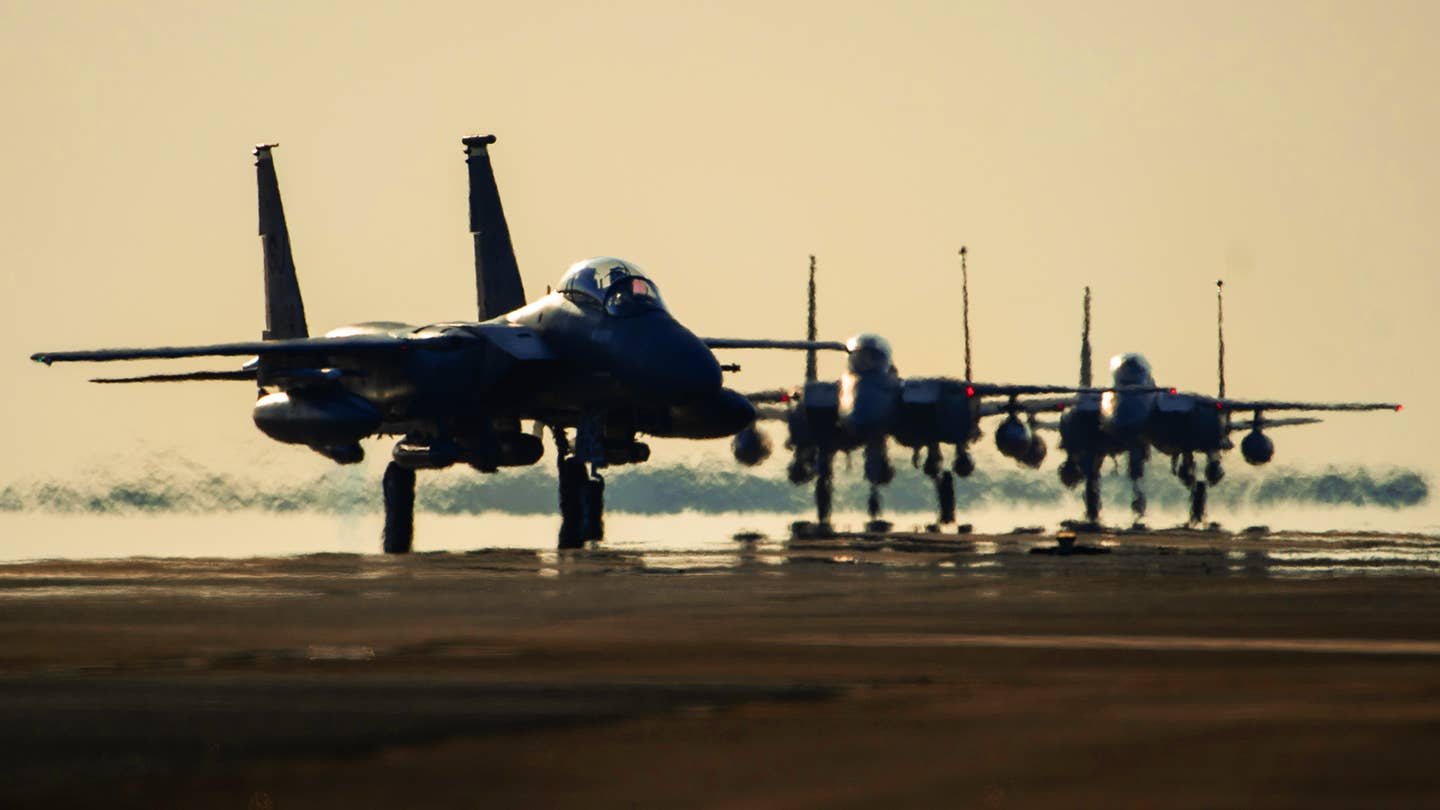The volatility in the Middle East just hit a ominous new milepost with no offramp in sight.

It looks like the crisis in the Middle East, spurred by the terror attacks by Hamas on October 7th, is about to escalate further after three U.S. service people were killed in a drone strike by Iranian proxies on an outpost near the Syrian border in Jordan. Dozens more were injured and the list is growing. Now the region braces for a response from the United States. Where this is all headed nobody can know for sure, but the possibilities are increasingly ominous, to say the least.
As we have noted for many weeks, it is abundantly clear that Iran is goading the U.S. into much larger kinetic operations across the region. With the continuing shooting conflict near the Bab el-Mandeb Strait and Houthi-controlled Yemeni territory, and the ongoing attacks on U.S. bases in Iraq, Syria and now Jordan, tensions have been ratcheting up. But now, with the first deaths of Americans since this all began, they could explode into a wider conflict. And make no mistake, Iran is behind all of it and a direct confrontation between the long-time foes is more likely now than ever in recent memory.
Striking Iran directly, while possible, seems remote as the U.S. is trying to keep a much wider conflict at bay, and for good reason. But at a certain point, that may no longer be politically tenable.
So what could the U.S. reprisal look like? It will most likely be focused on striking Iranian proxies in Syria and Iraq. This is nothing new, the U.S. has carried out multiple operations of this kind over the last three months, but this time it will likely be larger in scope and magnitude against sites more closely related to Islamic Revolutionary Guards Corp (IRGC) operations that support those proxies.
There are other targets that could be acted upon, like Iran’s support ship/sea base, the MV Behshad, that has been on station for many months in the Red Sea and has just repositioned itself in the Gulf of Aden, just as anti-ship strikes started to be focused there last week. That vessel is very likely providing direct intelligence support for the Houthis in their anti-ship missile campaign. Israel struck the ship that was on station before the current one replaced it, so there is a precedent for such an act.
An outright war with Iran would be extremely dangerous, very deadly, potentially very expensive, and highly disruptive economically. Iran has the ability to rain ballistic and cruise missiles, as well as drones, on U.S. and allied interests across the Persian Gulf and beyond. It will also close the Strait of Hormuz, which will have massive impacts to the global economy. It could quickly spiral into a wider fight, with Israel being the major wild card, and Iran’s allies to a lesser extent. Most importantly, what would be the endgame? It would also come at a time when the U.S. military is drowning in priorities elsewhere, with the so-called ‘pivot to the Pacific’ now looking far more unrealistic, just as we have said repeatedly it would be. Just acting like the Middle East will be fine to suit your larger strategic aims isn’t based in reality. It never was.
Then there is a wider view to consider. The focus is being taken off of the ongoing fight against Russia in Ukraine. Resources and focus have been pulled from that critical theater to the Middle East in the wake of the Israel-Hamas war. This occurred at the same time that stronger Russian ties were building between Iran as well as North Korea, the latter of which has entered a new phase of bellicose rhetoric and actions. It now also has Russia as a direct military ally and arms partner, which changes the equation on the Korean Peninsula.
Tied to all these growing adversarial threats is China, which has its aims on Taiwan and the South China Sea. While a major conflict between Iran and the U.S. would not be good for Beijing, as it is dependent on oil supplies emanating from the Persian Gulf and Iran, a future scenario where these parties work together to coordinate nefarious military actions is far more probable than it was in the recent past.
Jan. 8, 2024) The Arleigh Burke-class guided-missile destroyer USS Mason (DDG 87) conducts a vertical replenishment with the Nimitz-class aircraft carrier USS Dwight D. Eisenhower (CVN 69) while the ships operate in support of Operation Prosperity Guardian (OPG) in the Red Sea, Jan. 8. (U.S. Navy photo by Mass Communication Specialist 1st Class Chris Krucke)
This is also happening amidst a backdrop of weapons stockpile depletion among the U.S. and its allies, with major work being done to spin up production of expendable munitions and other materiel. Even a limited sustained conflict in the region, even falling short of being a direct fight with Iran, would put further pressure on these stockpiles. Just the allocation of critical defensive capabilities to the region is already a major concern. All adversary parties stand to gain significantly from this, and especially Russia. Moscow’s reliance on Iran for weapons is also a major issue. If a campaign were waged against Iran, this support would be disrupted or stopped entirely. While this may be good for Ukraine in the near term, what Russia may do to keep this from happening remains unclear.
The bottom line is that vast interconnectedness of events unfolding in the Middle East right now and those ongoing or brewing around the globe cannot be underestimated, which makes every decision going forward that much more critical.
Time will tell what the Biden Administration chooses to do after this recent deadly attack and what Iran’s response will be, but it’s undeniable that the volatility in the region has just hit a new milepost with no offramp in sight.
Contact the author: Tyler@thedrive.com


